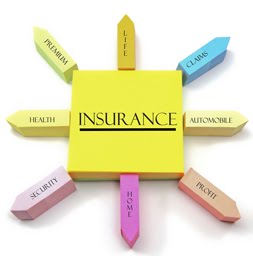The Best Places To Keep Your Money Safe And Keep It Growing
 When you want to grow your money or just keep it safe, probably your first impulse is to look for a bank account that offers good interest rates and put it in there. This is how most of us will keep our money safe and amass a little interest over time, but are you really making the most of your cash when you put it away like that and forget about it? Could you be doing more with your cash or enjoying more benefits? Here we will look at how to get more from your money and how to choose the right account or service for you and your money.
When you want to grow your money or just keep it safe, probably your first impulse is to look for a bank account that offers good interest rates and put it in there. This is how most of us will keep our money safe and amass a little interest over time, but are you really making the most of your cash when you put it away like that and forget about it? Could you be doing more with your cash or enjoying more benefits? Here we will look at how to get more from your money and how to choose the right account or service for you and your money.
Understanding Bank Accounts
Before you put your money into any account, you should make sure that you understand precisely what a bank account is and what it does. What you might not be aware of for instance, is that when you put your money into an account that money gets invested into properties, projects and businesses as though you were playing the stock market with it. The interest you accumulate is the customers’ cut of the profit the bank makes by making those investments.
Now generally this interest is pretty low in a current account, but you can make more interest by putting it into a range of savings accounts which generally make accessing your money more difficult. Because you take your money out of a savings account less frequently, the banks can make more profit from investing it and thus they can offer you higher APR (annual percentage rate). If you pay into an ISA that doesn’t allow regular access, then this will provide you with even higher interest.
Choosing the right bank account then should mean choosing the bank that you most trust, choosing the deal with the highest APR (make sure it’s cumulative interest) and choosing the one that offers the easiest access. In general you should also make sure that you have multiple bank accounts with different organizations. This will keep your money safer because it won’t all be in one ‘pot’ should anything happen to that bank, and it will also help you to keep track of your own money and to budget more wisely.
Other Options
The problem is though that with any bank account you will still only be taking a cut of the profit they get from investing your money – and a very small cut at that. There are ways you can increase this amount further though, which include investing yourself in stocks and shares (or bonds) or alternatively using something like a self-managed super fund which means essentially teaming up with some other people to invest your cash jointly and choose which investments you want to make.
There are also other ways you can keep your money safe which provide other benefits or which are more suitable for particular groups. For instance if you run a large business and are worried about potential bankruptcy you might be interested in asset protection in which case you may be interest in a Swiss Annuity which pays you back your own money with interest over a set duration. If you need to take out life insurance to protect your family meanwhile, then life assurance policies can help you to invest your cash while at the same time protecting your family and could be a great way to protect your family.
















